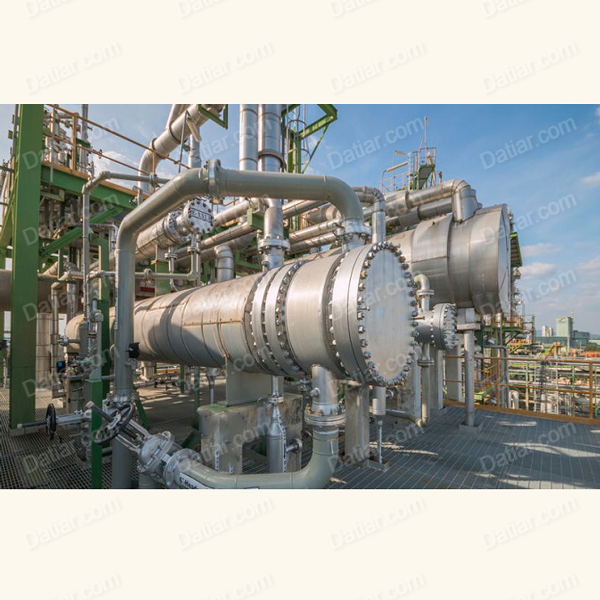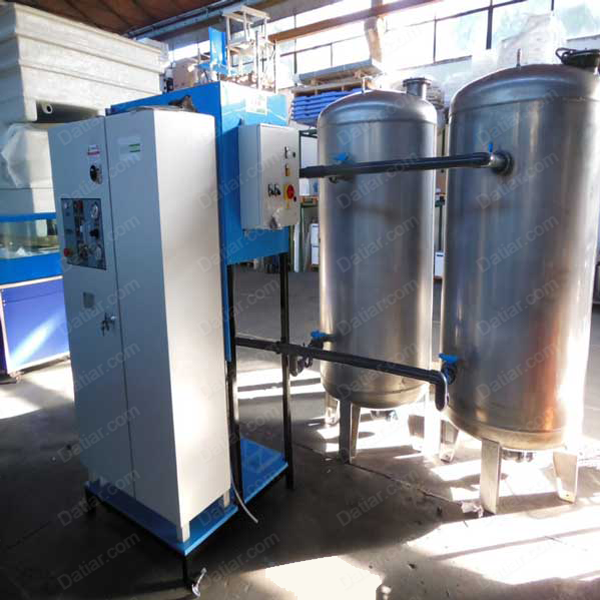Foam Fire Suppression System
A Foam Fire Suppression System is a type of fire protection system designed to extinguish fires involving flammable liquids (Class B fires) and certain types of solid fires (Class A fires) by smothering them with a layer of foam. This system is particularly effective in environments where water alone may not be sufficient to control the fire, such as areas where flammable liquids are present, like oil refineries, chemical plants, aircraft hangars, and fuel storage facilities.
Here are some key components and features of a Foam Fire Suppression System:
- Foam Concentrate: The system typically uses a foam concentrate, which is mixed with water to generate foam. There are different types of foam concentrates available, including protein-based, synthetic-based, and fluoroprotein-based foams, each suited for different types of fires.
- Foam Storage Tank: Foam concentrate is usually stored in a dedicated storage tank. When activated, the concentrate is drawn from the tank and mixed with water to create foam solution.
- Proportioning System: A proportioning system accurately mixes the foam concentrate with water at the desired ratio to produce foam solution. This solution is then delivered to the fire through a network of pipes and nozzles.
- Foam Generators: These are devices that create foam by mixing air, water, and foam concentrate. The foam is then applied to the fire to suppress it.
- Sprinkler Nozzles: Foam fire suppression systems may use specialized sprinkler nozzles designed to deliver foam in an efficient manner. These nozzles can be fixed in place or may be designed for manual operation.
- Control Panel: The system is typically controlled by a central control panel that monitors sensors and activates the system when a fire is detected. The control panel may also provide manual control options.
Foam fire suppression systems are known for their rapid fire knockdown capability and ability to form a barrier between the fuel and the oxygen, preventing re-ignition. They are often used in conjunction with other fire protection systems for comprehensive fire safety in industrial and commercial settings.
- Types of Foam:
- Foam concentrates used in these systems can be categorized into several types based on their composition and performance characteristics:
- Protein-Based Foam: Made from natural protein sources such as animal proteins. These foams are effective against hydrocarbon-based fires but may be less effective on polar solvents.
- Synthetic-Based Foam: Formulated from synthetic materials and surfactants. They are versatile and effective on a wide range of fuel types, including both hydrocarbons and polar solvents.
- Fluoroprotein-Based Foam: Combines the properties of protein-based and synthetic-based foams. They offer good performance on both hydrocarbon and polar solvent fires.
- Alcohol-Resistant Foam: Specifically formulated to combat fires involving alcohols and other polar solvents.
- Application Methods:
- Fixed Systems: Foam is delivered through a network of piping and discharge devices, such as foam sprinklers or foam chambers, which are strategically located to cover the protected area.
- Mobile Systems: Portable foam generators or fire trucks equipped with foam tanks and discharge equipment can be deployed to extinguish fires in locations where fixed systems are not available or practical.
- Foam Expansion Ratio: Foam expansion ratio refers to the ratio of the volume of foam produced to the volume of foam solution used. Different foam concentrates have different expansion ratios, typically ranging from 2:1 to 20:1 or more. Higher expansion ratios result in greater coverage with less concentrate usage.
- Foam Stability: Foam stability refers to the ability of the foam blanket to maintain its structure and effectiveness over time. Factors such as temperature, agitation, and chemical contamination can affect foam stability. Some foam concentrates include additives to enhance stability in challenging conditions.
- Environmental Considerations: While effective for fire suppression, foam concentrates may contain chemicals that can be harmful to the environment. As a result, there is increasing interest in environmentally friendly foam formulations that minimize ecological impact while maintaining firefighting effectiveness.
- Maintenance and Inspection: Regular maintenance and inspection are essential to ensure the reliable operation of foam fire suppression systems. This includes routine testing of system components, checking for leaks or blockages, and verifying the condition of foam concentrate and storage tanks.
Foam fire suppression systems are a valuable tool for protecting high-risk environments from fire hazards, offering rapid and effective extinguishment of flammable liquid fires. Proper design, installation, and maintenance are critical to maximizing the performance and reliability of these systems.







